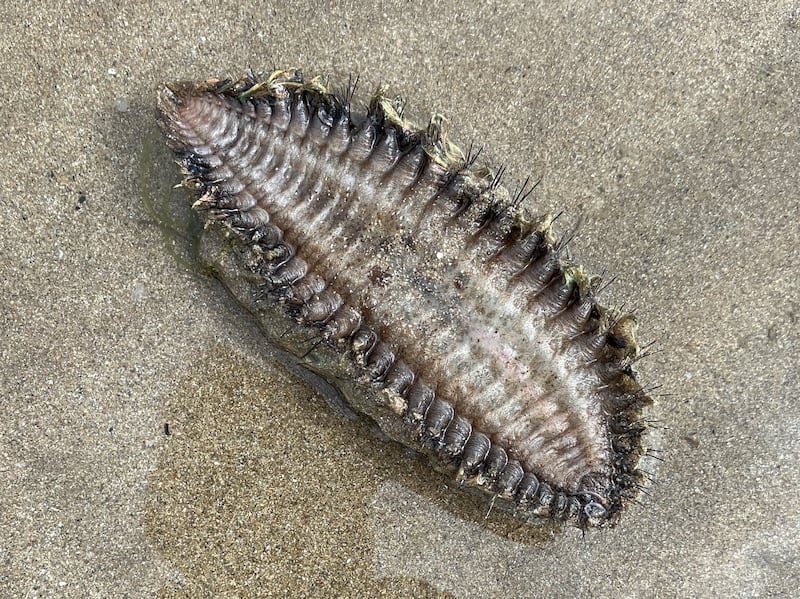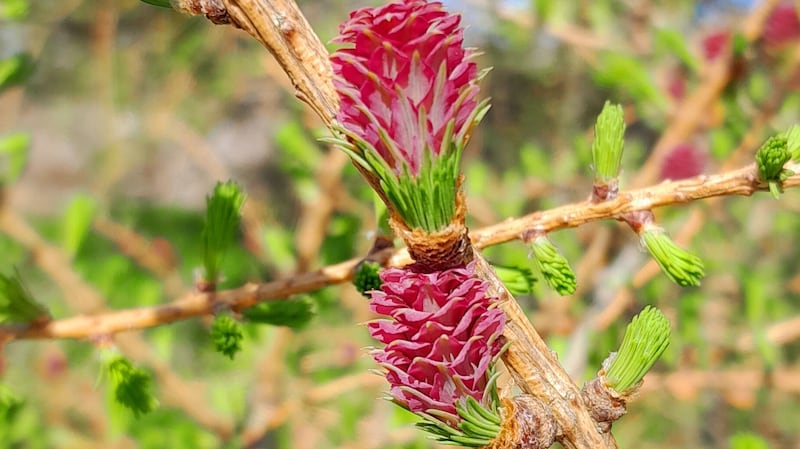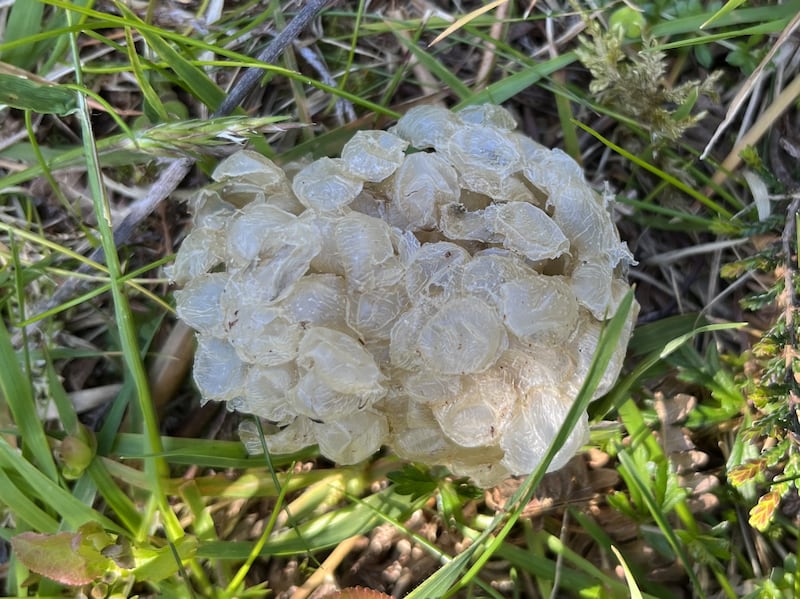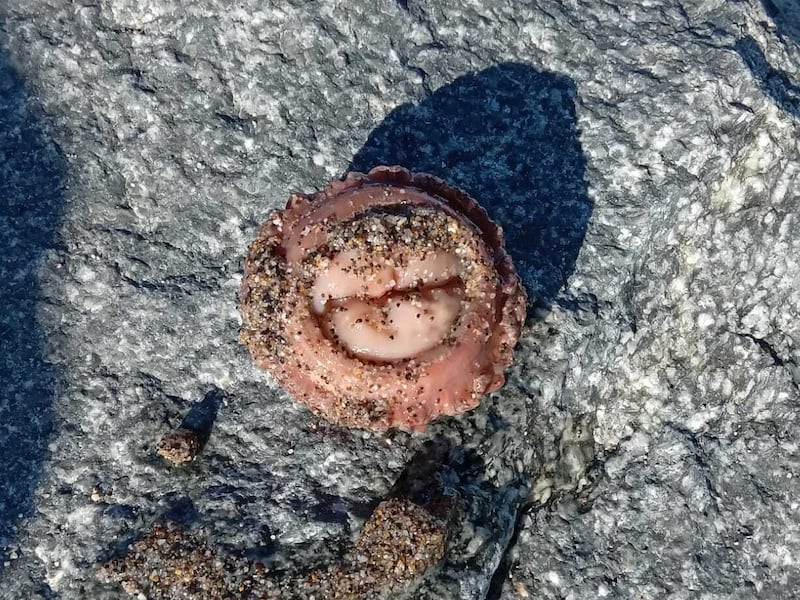Are these yellow flowers in the river Shannon a type of water lily? The photograph was taken from footbridge over the Shannon at Castleconnell. Gerry Sheeran, Co Limerick
No they are a type of buttercup. This is marsh marigold, also called Goldilocks (Caltha palustris). This native plant grows in wet areas such as marshes, fens, stream margins and, as here, in very shallow parts of rivers. It was considered long ago that it could protect houses, people, cattle and farm produce from evil sprits and so was an important part of garlands thrown on the roofs of houses above the door, on May Eve.

My husband found the attached creature on the beach at Newcastle. What is it? Angela Mason, Co Wicklow
It is a sea anemone, part of a group of animals known as cnidarians – jelly animals. It attaches itself to rocks or other hard substrates by means of a sticky basal disc. When covered by the tide, it expands the circle of tentacles surrounding its mouth in order to feed. These contain stinging cells, which are used for self-defence as well catching food. When the tide is out, it retracts the tentacles and looks like a blob of jelly or a half-sucked fruit pastille.
READ MORE

I found this insect in my bathroom. It looked more blue-green and exotic than it appears in the photo. It’s not at all familiar to me. Stephen Kernan, Co Dublin
It is a lacewing, so called because of its delicately netted wings. This is a carnivorous insect that feeds mainly on aphids. It often comes to lighted windows at night and so was able to gain access to your bathroom via the open window.

I spotted this flowering tree on Dalkey Hill, Co Dublin, in April. Can you please identify it? John Glendon, Co Dublin
This is a flowering European larch, which is a deciduous conifer. Both male and female flowers are found on the same tree and, as it is wind pollinated, the flowers occur before the leaves. The female flowers are clusters of rosy-pink scales, while the male flowers are much smaller and are a nondescript buff colour.

I noticed this “ball” of what appeared to be spawn on a coastal path. There was no sign of life and it was slightly bigger than a golf ball. What is it? John Mulcahy, Co Donegal
It has nothing to do with golf. It is the empty egg mass of the common whelk, a sea snail that lives in deeper waters. It lays eggs in a mass of bubbles, which are stuck together. The young hatch out under water and the empty egg mass washes up on the shore and dries out. As it is very light, it is easily blown by the wind away from the beach altogether.

I found this creature stranded at the water’s edge of a very low tide at Kinnegar Strand near Rathmullan, Co Donegal. It was still moving so I dug a scrape in the sand, which filled with water, and put it in. Hopefully it survived. What is it? Guy Stephenson, Co Donegal
It is the sea mouse, which unlikely as it seems, is actually a marine worm. Your picture shows its underside with golden brown and greenish bristles along the side. The upper side is covered with a “fur” of brownish-grey hairs, hence the name. It lives below the low tide mark, so this one was caught napping by the exceeding low tide that day. Your intervention most likely enabled it to plough its way through the sand back to the deeps, where it hunts small crabs and other worms.
Please submit your nature query, observation, or photo with a location, via irishtimes.com/eyeonnature











